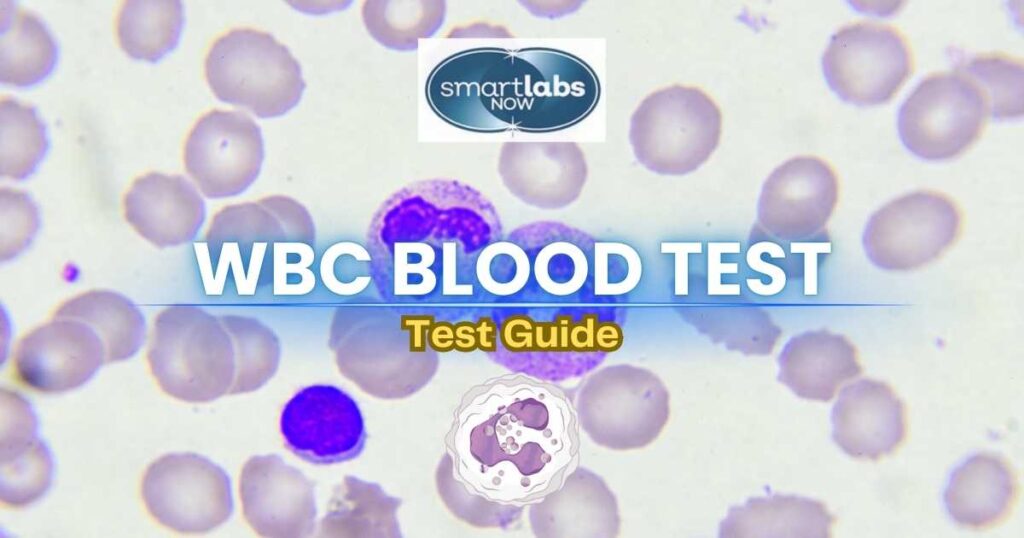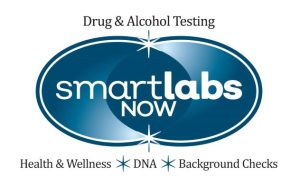
A White Blood Cell (WBC) blood test is an essential tool for understanding the health of your immune system. White blood cells, or leukocytes, are crucial defenders in your body, working to fight infections, ward off diseases, and maintain balance in your immune response.
This guide explains the reasons for taking a WBC test (typically offered under a Complete Blood Count panel), including the conditions it helps diagnose. It provides an easy-to-understand breakdown of the test process, interpretation of results, associated risks, and potential implications of abnormal WBC counts.
Knowing what to expect from a WBC blood test can be empowering, whether you’re monitoring an existing condition or seeking preventive health insights.
In Portland, OR, Smart Lab Now provides professional in-lab and at-home WBC testing options, making it easy and accessible to prioritize your health 🙂.

A WBC test assesses the number and types of white blood cells in the blood, helping doctors diagnose, monitor, or rule out various health conditions. It’s often used to investigate symptoms like unexplained fever, inflammation, fatigue, or suspected infections, and it’s essential for patients with autoimmune diseases, chronic illnesses, or blood disorders.
These cells are the body’s first defense against bacterial infections and acute inflammation. High neutrophil levels, or neutrophilia, often indicate bacterial infections, while low levels (neutropenia) increase susceptibility to infections.
Key to combating viruses and abnormal cells, high lymphocyte levels (lymphocytosis) typically signal viral infections or some cancers, whereas low levels (lymphopenia) may point to autoimmune disorders.
Important for controlling chronic infections and aiding in tissue repair, high monocyte counts (monocytosis) are often associated with chronic inflammation and some cancers.
These cells respond to parasitic infections and allergies, with elevated eosinophil counts (eosinophilia) often occurring with asthma, allergies, or parasitic infections.
These cells play a role in allergic reactions, and their counts are increased in chronic inflammation, hypothyroidism, and certain blood disorders.

The WBC test is simple, safe, and straightforward. A healthcare provider draws a small blood sample from a vein, typically in the arm, and analyzes it in a laboratory.
Generally, no special preparation is needed. However, certain medications can impact WBC counts, so inform your doctor of any prescriptions or supplements you are taking.
The blood draw requires a sterilized needle to collect the sample. The puncture site is cleaned to reduce infection risk, and the sample is stored in a test tube for transport to the lab.
After the blood draw, gauze and a bandage are applied to prevent bleeding and bruising.
Accredited labs analyze the sample, using highly calibrated equipment to count the different types of cells present in the blood.
They’ll interpret the results, considering medical history and any relevant symptoms to make an accurate diagnosis.

WBC test results can provide valuable information about immune health and reveal potential issues. The typical WBC range for adults is 4,500 to 11,000 cells per microliter. Counts outside this range may warrant further investigation.
WBC counts can vary based on whether an infection is acute or chronic, making it valuable for monitoring the body’s response over time.
After an infection, WBC tests can determine if levels are normalizing, offering insight into the body’s recovery process.

WBC blood tests are minimally invasive and generally low-risk. However, there are a few considerations:
Some people may experience slight bruising or lightheadedness after the blood draw.
Infection can occur at the puncture site only rarely. Applying gentle pressure immediately after the draw helps mitigate this risk.
Prescription or over-the-counter medications can impact WBC counts. If you’re taking medications that could affect your immune response, let your healthcare provider know.

Abnormal WBC levels can be symptomatic of underlying health issues.
If WBC abnormalities are detected, further tests, like bone marrow biopsies or C-reactive protein (CRP) tests, might be ordered to get a fuller picture of immune health.

A balanced diet and healthy lifestyle contribute to maintaining normal WBC levels and a robust immune system.
Essential for WBC production, protein-rich foods like lean meats, eggs, and legumes support immune health.
Monitoring your CBC regularly can help detect changes in WBC levels due to diet, stress, or lifestyle factors.
Chronic inflammation from poor diet or lack of exercise can cause leukocytosis, while nutrient deficiencies may lead to neutropenia.

For Portland residents, WBC testing is straightforward and accessible through Smart Lab Now, offering both in-lab and at-home/other address testing options.
By choosing Smart Lab Now, you’re ensuring quality and accuracy in WBC testing. With our state-of-the-art labs and professional services, scheduling a WBC blood test is made convenient, comprehensive, and patient-focused 🤝.
Please consult your primary care physician before engaging with any pharmaceutical, natural substances, or activity regimens mentioned or prescribed in this post. Smart Labs Now is not responsible for health or life outcomes based on the information or recommendations provided. This account does not serve as a substitute for professional medical advice/help.